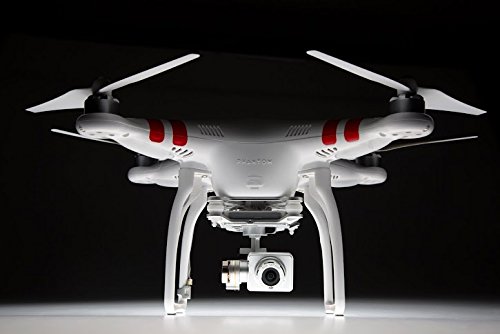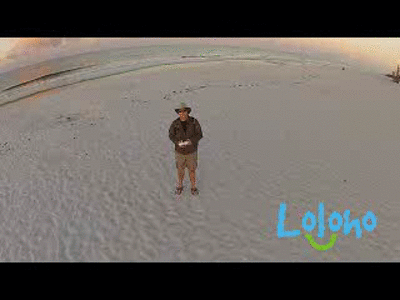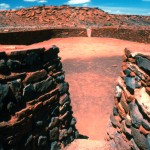Like many photographers, in recent years we’ve acquired a drone for aerial shots. Our drone of choice is the popular DJI Phantom series (http://goo.gl/uklwdh), but there are many such products on the market.
What is a drone? Simply stated, it’s a remotely controlled flying device, usually some form of quadcopter, that’s often equipped with a camera. Drones allow us to capture sky high images from RV shows and events that previously would have been unobtainable. They are wonderful storytelling tools.
As a drone owner, I appreciate the incredible promise of this new technology. Since we purchased our own drone, we’ve integrated the shots into our video and photo projects on our website Long Long Honeymoon, and they have provided a fresh new perspective.
Drones are already being used in search and rescue efforts (they are much cheaper to operate than helicopters). Amazon claims they may someday be used to deliver packages.
Like it or not, drones are becoming more common in our lives. The only guarantee with technology is that it will continually improve.
When we acquired our own drone, I was immediately impressed with its incredible potential. “This is the coolest tech gadget I’ve bought since my original iPhone, “ I told my wife. “In five years, these things will either be everywhere, or they will be illegal.”
GUNS ARE OKAY. DRONES? NO WAY!?
It didn’t take five years for my words to come true. In our national parks, drones have already been made illegal. Our government may not be good at much, but it’s great at banning.
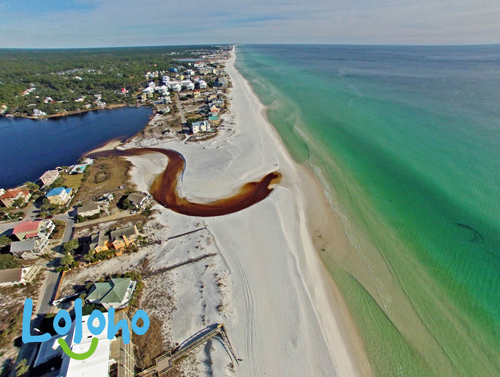
Here's a shot of a Dune Coastal Lake in Florida, at the point it empties into the Gulf of Mexico. Try getting this shot with a tripod. (Click the pic for more info.)
Why a drone ban? Sadly, drones have their downsides. We read with dismay the recent reports of a boneheaded Dutch tourist who crashed his own drone into Yellowstone’s Grand Prismatic Spring. Apparently the drone crashed into the spring, one of Yellowstone’s most impressive natural features, and sank. Park officials have expressed concern that the drone may adversely affect the ecosystem of the spring.
While I’m no scientist, it’s hard for me to imagine a 2-pound plastic drone leaving much of a lasting impact on the Yellowstone supervolcano. However, I will concede that the disintegrating lithium batteries of the drone will do no one any good. Like all litter, we’d be better off without it..
Should drones be illegal in all national parks? I’m not so sure. I do concede that there are numerous ethical and safety issues presented by drones. But I’m not certain that a blanket Soviet-style ban is the best solution here in the land of the free. It seems a little silly: you can bring loaded firearms into our national parks, but not plastic helicopters?
ETHICS AND SAFETY
Let’s ponder a few ethical and safety issues raised by drones.
From an ethical standpoint, there’s the question of whether we want individuals (or even worse, our government) monitoring the activity of others via aircraft. Yes, drones can theoretically be used to spy on people. Personally, I don’t want my local Barney Fife buzzing our neighborhood spying into our backyard. Do you?
So there is a spying concern here. But is it any worse than telephoto lenses? Telephoto lenses allow people to spy from long distances, and they are even more stealthy than drones. (Drones are loud little suckers that announce their presence; telephoto lenses are quiet.) Should we make telephoto lenses illegal because they may be misused? Private detectives and wildlife photographers would be put out of business.
At the moment most drones are noisy. There’s no denying that they emit what might be called noise pollution. Should drones be made illegal for this reason?
Well, drones emit no more noise than most automobiles and generators. Let’s face it: the average diesel truck doesn’t sound like a symphony of songbirds. Yet we allow cars, diesel trucks, and fossil fuel generators in our parks.
Then there is the litter issue, such as occurred in Yellowstone. Frankly, there’s never any good excuse for litter. Of course, in this case the litter is accidental. No drone owner wants to see their high dollar tech toy go bye bye. With drones, the litter would never be intentional.
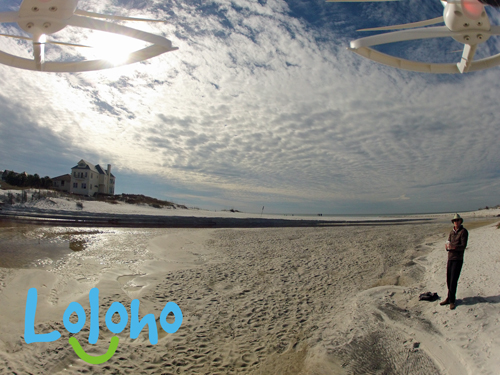
Let's please not call this a "selfie." Because I hate the term "selfie." (Click the pic for more info.)
But with drones, there is always the risk that the drone may crash in a difficult to retrieve location (for example, somewhere in the Grand Canyon, or high in a Glacier National Park treetop, or in Grand Prismatic Spring). Obviously we don’t want our parks to become littered with the unsightly carcasses of discarded drones.
With that said, it’s not hard to imagine special “retrieval drones” that could be sent into areas to retrieve crashed drones. It sounds like the stuff of science fiction, but it’s probably less complicated than our current video setup. Imagine a simple gripping claw attached to a powerful drone that could lift refuse. Such a tool would be useful in retrieving all sorts of litter, not just dead drones.
From a safety standpoint, errant drones could potentially cause plane crashes by flying into restricted airspace. This problem can be mitigated easier than you might think. Most drones contain GPS units, so they can be programmed from the factory to avoid airports and similar “off limits” areas.
Should drones be illegal in national parks? I hope we can find a middle ground that will allow for drone usage, without adversely affecting any ecosystems or fellow citizens.
For example, instead of a wholesale ban decree issued straight from the Kremlin, it might make more sense to have designated “drone zones” and “drone hours” in our parks. In other words, we could have certain areas of the parks where drones are allowed during certain times of day. This seems to me to be a reasonable compromise. The designated areas could be GPS programmed straight from the factory in all consumer drones, so the things will never get near Grand Prismatic Spring.
One thing’s for sure: the cat’s out of the bag. The horse has left the barn. The chicken has flown the coop. (Insert the fleeing animal analogy of your choice here.)
This technology has arrived. It will continually improve and grow more useful, and more popular.
Why attempt to neuter it? As a society, we need to consider smart ways to manage drone technology so that we reap its benefits while limiting its downsides.
